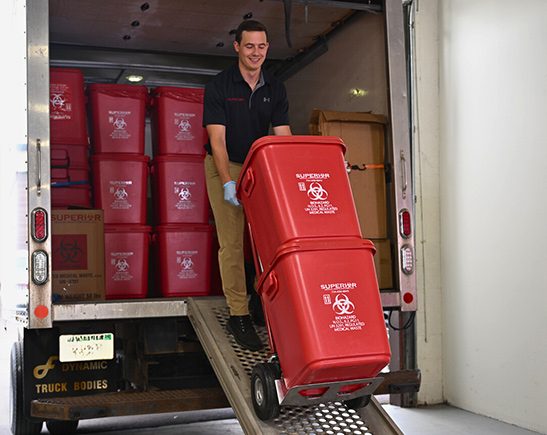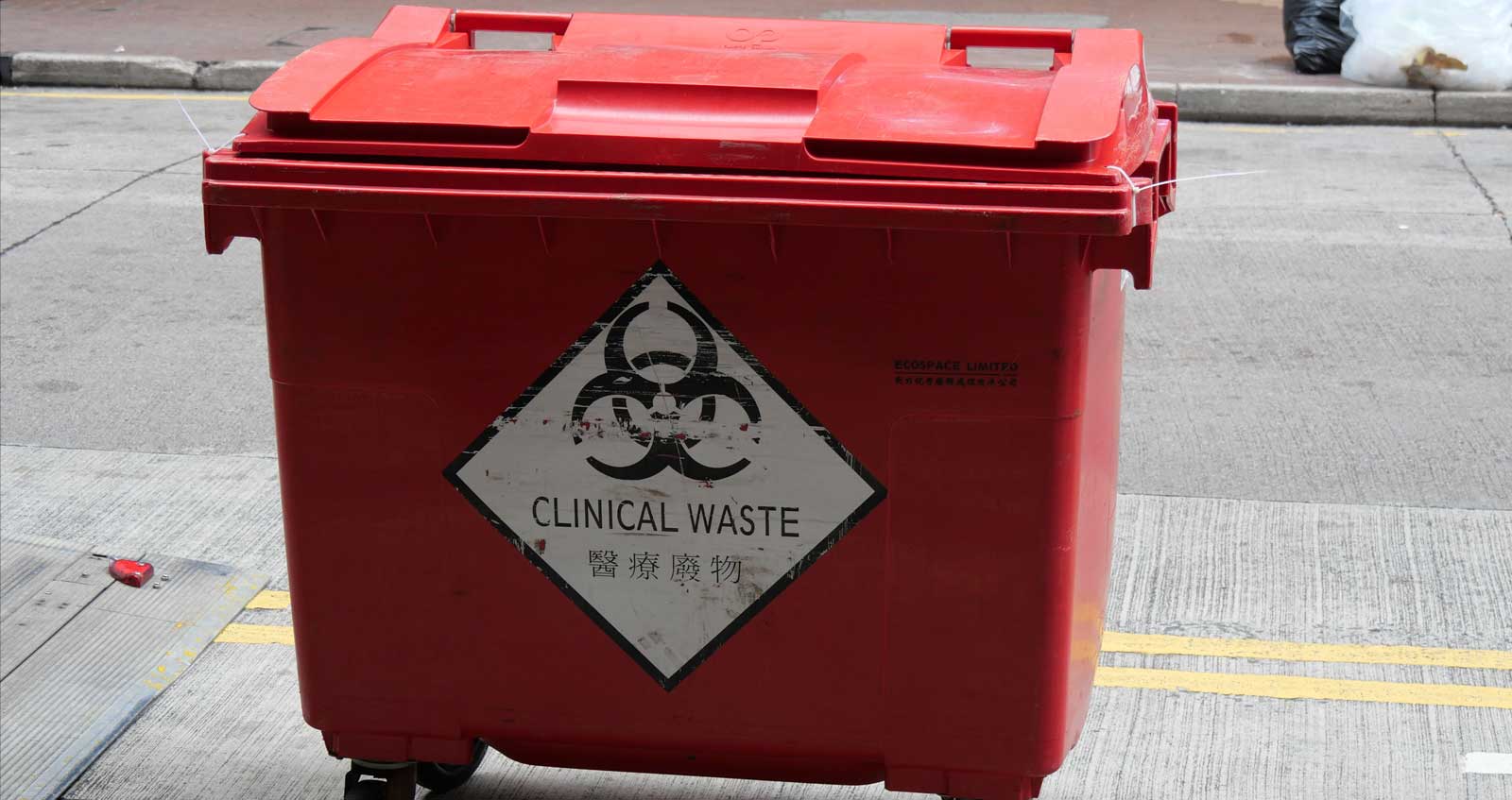Medical Waste Removal Excellence: Elevating Safety Requirements in Your Center
Remain Ahead of Rules: Professional Advice on Medical Garbage Disposal
In a world where the healthcare industry is continuously developing, it is imperative for clinical facilities to remain in advance of laws when it concerns the appropriate disposal of clinical waste. With stringent guidelines and regular governing adjustments, it can be testing to navigate the complexities of this process. With professional suggestions, centers can guarantee conformity and mitigate risks connected with incorrect waste disposal. From recognizing the different classifications of medical waste to applying the best collection and segregation approaches, this conversation will certainly supply valuable insights and actionable tips to assist facilities remain in advance of laws in the ever-changing landscape of clinical garbage disposal.
Recognizing Medical Waste Categories
Comprehending clinical waste groups is essential for proper disposal and management in medical care facilities. Medical waste describes any type of waste created by health care tasks that may pose a risk to public wellness or the setting. It is important to classify clinical waste accurately to guarantee its risk-free handling, therapy, disposal, and transport.
There are numerous categories of medical waste that health care centers require to be aware of. One of the most common categories consist of transmittable waste, pathological waste, sharps waste, pharmaceutical waste, and chemical waste. Each classification has details guidelines and guidelines for its proper management and disposal.
Infectious waste consists of materials contaminated with blood or other bodily liquids, such as gloves, gowns, and laboratory cultures. Pathological waste refers to human cells, organs, or body components that call for unique handling and disposal. Sharps waste includes made use of needles, syringes, and other sharp things that can create injury and transfer infections. Pharmaceutical waste makes up run out, unused, or infected drugs that require careful handling and disposal. Chemical waste includes solvents, disinfectants, and other chemical substances made use of in health care facilities.
Remaining Up-To-Date With Regulatory Changes
Remaining present with regulative adjustments is crucial for medical care facilities to ensure conformity and proper administration of medical garbage disposal. medical waste removal. With policies continuously advancing, it is crucial for medical care centers to remain current to prevent penalties, penalties, and prospective harm to the environment and public health and wellness
To remain ahead of regulative modifications, health care centers must establish a system for surveillance and tracking updates. This can be done by subscribing to governing newsletters, participating in workshops and conferences, and actively participating in sector associations. In addition, centers need to assign a team member or team accountable for staying informed and distributing information to pertinent stakeholders.
Routine communication with regulative agencies is likewise crucial. Health care centers must develop relationships with local, state, and government firms to ensure they are mindful of any type of adjustments in guidelines that may impact their waste administration techniques. This can be done with normal meetings, engagement in public remark durations, and positive interaction with regulative agencies.
Moreover, health care facilities should think about partnering with waste administration business that concentrate on medical garbage disposal (medical waste disposal services with WasteX). These companies are frequently well-versed in the newest guidelines and can supply assistance and support to ensure compliance
Implementing Proper Collection and Partition Techniques
To properly take care of medical garbage disposal, healthcare facilities must develop appropriate collection and partition approaches based on regulative standards. Executing these methods guarantees the safe handling and disposal of potentially dangerous products, safeguards the environment, and minimizes the threat of injuries and infections to medical care employees and the basic public.
Correct collection and segregation techniques include making use of designated containers and labeling systems. Health care centers need to offer clearly identified containers for different types of clinical waste, such as sharps, contagious waste, pharmaceutical waste, and non-hazardous have a peek here waste. These containers ought to be color-coded and clearly marked to avoid complication and advertise simple identification.
Additionally, medical care facilities should educate their personnel on the correct procedures for collecting and setting apart medical waste. This includes educating them on the various kinds of waste, the proper containers to make use of, and the relevance of complying with regulations and guidelines. Routine training sessions and refresher courses need to be performed to make sure that team member remain updated on ideal techniques.
Moreover, healthcare centers ought to develop a system for regular collection and disposal of clinical waste. This may involve partnering with accredited waste monitoring business that specialize in clinical waste disposal. These business will certainly guarantee that the gathered waste is carried and dealt with in conformity with regulatory requirements.
Choosing the Right Disposal Techniques

Incineration is one of the most common and effective methods for taking care of particular sorts of clinical waste, such as pathological waste and sharps. It involves the regulated combustion of waste at heats, lowering it to ash. Nonetheless, incineration can release harmful toxins into the air and add to air pollution.

Various other disposal techniques consist of chemical therapy, microwave therapy, and landfilling. Chemical therapy includes using chemicals to sanitize and counteract the waste. Microwave therapy uses microwave energy to warmth and disinfect the waste. Landfilling includes hiding the waste in a marked land fill area (medical waste disposal services with WasteX). However, landfilling needs to be the last resource because of the possible danger of contamination to soil and groundwater.
Guaranteeing Conformity Through Paperwork and Training
After thoroughly considering the ideal disposal techniques for medical waste, medical care facilities should guarantee compliance with laws and minimize ecological impact by executing efficient documentation and training treatments. This action is critical in keeping a sustainable and risk-free environment for both health care employees and the general public.

Training is just as crucial in making sure compliance with laws. Healthcare employees who deal with clinical waste must receive appropriate training Clicking Here on waste segregation, taking care of, and disposal treatments. This training should cover subjects such as the correct use personal safety devices, identification of various types of waste, and the right disposal techniques for each waste group. By providing extensive training, health care facilities can encourage their personnel to make enlightened decisions and decrease the danger of improper garbage disposal.
Verdict
To conclude, remaining ahead of laws in medical garbage disposal is vital for health care centers. medical waste removal. Understanding the different categories of clinical waste, staying upgraded with regulative adjustments, carrying out correct collection and segregation approaches, selecting the proper disposal techniques, and making sure compliance through paperwork and training are all crucial steps. By following these guidelines, medical care organizations can successfully handle and dispose of clinical waste in a liable and risk-free way
From understanding the different groups of medical waste to implementing the right collection and partition approaches, this discussion will offer valuable insights and actionable suggestions to aid centers remain in advance of guidelines in the ever-changing landscape of clinical waste disposal. - medical waste disposal services with WasteX
The most usual classifications include contagious waste, pathological waste, sharps waste, pharmaceutical waste, and chemical waste. Healthcare centers must offer plainly labeled containers for various types of medical waste, such as sharps, infectious waste, pharmaceutical waste, and non-hazardous waste. Healthcare centers must establish a comprehensive system to tape-record and track all facets of clinical waste disposal, consisting of kinds of waste generated, amounts, and disposal approaches utilized. Health care workers who deal with clinical waste needs to obtain proper training on waste segregation, managing, and disposal treatments.